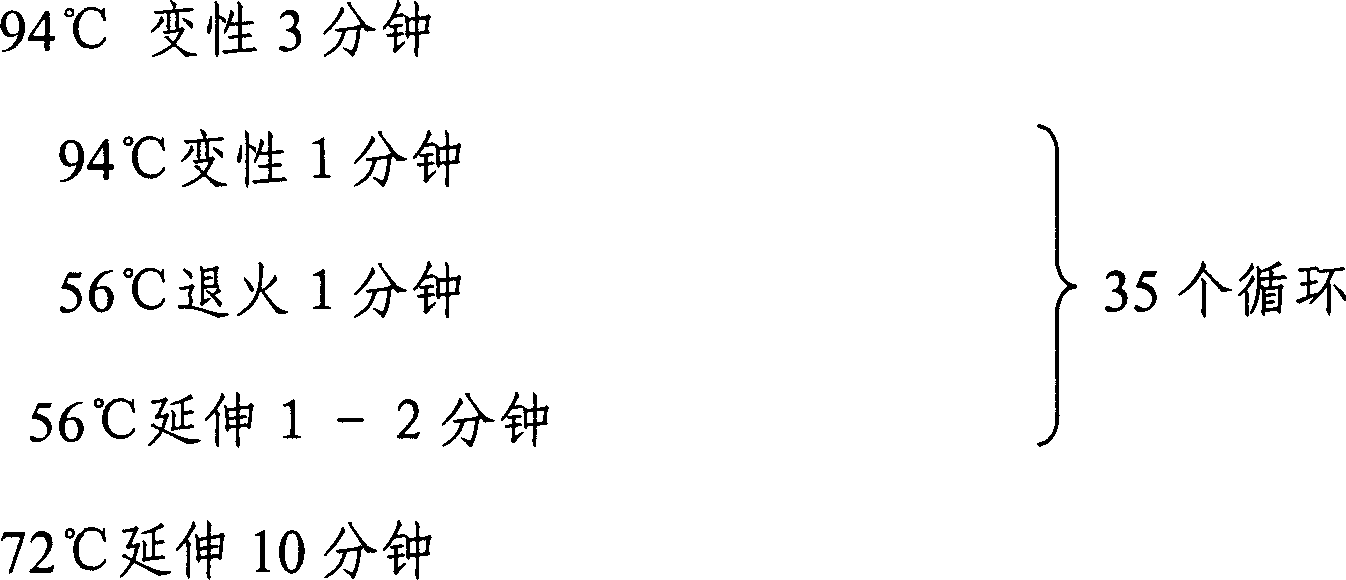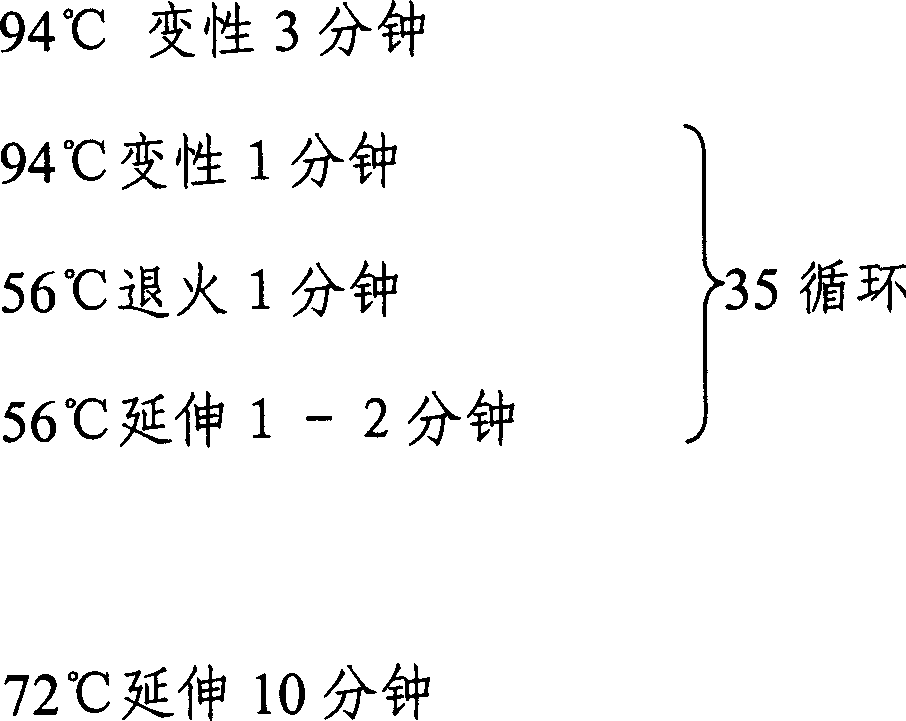Coded gene of cysteine proteinase of cotton and application
A cysteine protease, coding technology, applied in the field of recombination and functional analysis and application, cloning of cotton cysteine protease gene
- Summary
- Abstract
- Description
- Claims
- Application Information
AI Technical Summary
Problems solved by technology
Method used
Image
Examples
Embodiment 1
[0076] Embodiment 1: the cloning method of coding cotton cysteine protease gene:
[0077] 1 Extraction of total RNA
[0078] The solution for extracting RNA must be treated with DEPC. Add 0.1% DEPC to the double-distilled water used to prepare the mother solution, stir and mix overnight, and sterilize under high pressure for use. Use ethanol and isopropanol immediately after opening. All glassware was baked at 2000C for 6 hours, plastic products were soaked in 0.1% DEPC solution for 30 minutes, and then sterilized by high pressure to inhibit the activity of nuclease before use.
[0079] (1) 12 ml of extract (200mmol L-1 Tis-HCL, Ph 8.5, 300mmol L-1, 10mmol L-1EDTA, 1.5% sodium deoxycholate,
[0080] 1.5% Nonidep-40) was mixed with 120 microliters of mercaptoethanol and 1% PVP (W / V), added to a centrifuge tube, and cooled in an ice-water bath.
[0081] (2) Take about 1 gram of the material, grind it into powder with liquid nitrogen, transfer it into a centrifuge tube, mix i...
Embodiment 2
[0123] Embodiment 2: Cotton cysteine protease gene Ghcysp sequence
[0124] The results of the cloned gene sequence analysis are as follows:
[0125] (1) Information of SEQ.IN.NO 1
[0126] (a) Sequential features
[0127] Length: 1368 base pairs
[0128] Type: nucleic acid
[0129] Chain type: double chain
[0130] Topology: Linear
[0131] (b) Molecular type: cDNA
[0132] (c) Assumption: No
[0133] (d) Antisense: no
[0134] (e) Original source: Cotton
[0135] (f) Sequence description: SEQ.IN.NO 1
[0136] 1 ATTACCAATA CACATCAAAC TTTTTCACTA TAAAACCCCA CTTCAAAACC CTTTTGGAGT
[0137] 61 AATCAAATTA GGATCTAATC CTTCAACTTT CTAAACCAAT GGCTTTGCTG CAAATTTTTC
[0138] 121 TCTTCGTTGC TCTGGTTCTA TCATTCTGTTTTTCCATCCAACTTGCTGGA CTGTCTCGTC
[0139] 181 CACTCTTGGA TGAAGACTCC ATGAGGCATG AGGAGTGGAT GAGTCAACAT GGCCGTGTTT
[0140] 241 ACGCGGATGA GCAGGAGGAC CATAAGAACA AGCGCTTCAA TGTGTTTAAA GAGAACGTCG
[0141] 301 AACGAATTGA AGAGTTTAAT GACGGAAAAA CTTTCAAACT TGCGATAAAT CAGTTTGCT...
Embodiment 3
[0173] Embodiment 3: Construction of expression vector
[0174] 1 According to the coding cotton cysteine protease gene Ghcysp sequence, design the following PCR primers:
[0175] Forward primer: 5'AAAACC CCA CTT CAA AAC CC 3'
[0176] Reverse primer: 5'GCA CAC GAT TCA TTC ATAAC 3'
[0177] The cDNA of senescent leaves was used as a template for RT-PCR amplification to obtain PCR products. 2 Take 2 μl of the PCR product and connect it with pGEM-T Vector. The method is carried out according to the instructions of the Promega product. The connection product is transformed into DH5α bacteria (purchased from Shanghai Sangong Bioengineering Co., Ltd.), and the transformed bacteria are on LB / ampicillin / IPTG / -Gal solid Medium culture, 37 ℃ inverted culture for 12-20 hours, some colonies are white, some become blue. Select the white colony, extract the plasmid DNA, carry out enzyme digestion and PCR identification.
[0178] 3 Cut out the fragment with a restriction endonuclease,...
PUM
 Login to View More
Login to View More Abstract
Description
Claims
Application Information
 Login to View More
Login to View More - R&D
- Intellectual Property
- Life Sciences
- Materials
- Tech Scout
- Unparalleled Data Quality
- Higher Quality Content
- 60% Fewer Hallucinations
Browse by: Latest US Patents, China's latest patents, Technical Efficacy Thesaurus, Application Domain, Technology Topic, Popular Technical Reports.
© 2025 PatSnap. All rights reserved.Legal|Privacy policy|Modern Slavery Act Transparency Statement|Sitemap|About US| Contact US: help@patsnap.com


